Roof Rat
- Article
- Roof Rat
Roof Rat
Scientific Name: Rattus rattus
How to identify a roof rat
Roof rats have a head and body length of 165- 205 mm, a tail length of 185-245 mm and a body weight of 95-340 g. Root rats have a tail that is longer than its body which makes it easy to identify. Root rats also have a pointy nose and relatively large eyes and ears. Its colour ranges from black to light brown.

Root rats have extra pads and longer digits on their paws which enable them to be excellent climbers.
Roots rats can also be identified through their droppings as they have pointed ends (whereas brown rats have blunt end droppings).
It prefers food of fruit or vegetable origin but will consume virtually any human food. Because of its habit of consuming fruits and vegetables, its need for water is reduced.
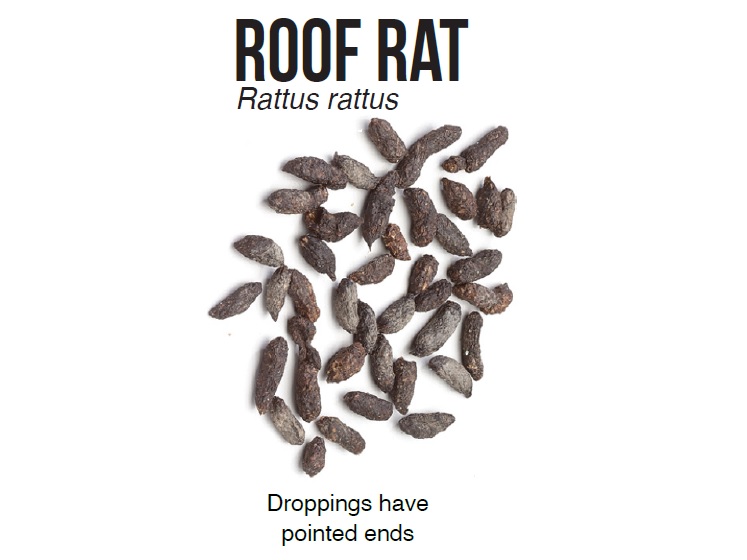
Where are roof rats commonly found?
Roots rats are commonly found in domestic dwellings, roof voids, inside wall insulation, boxes and other areas around the home.
Why are roof rats considered a pest?
Mice and rats are considered a pest as they:
-
Carry disease – rats and mice have the potential to transmit a number of diseases, some of them potentially fatal. Rodents are carriers of at least 35 diseases that plague commercial, industrial and residential areas. Some of these diseases include leptospirosis, asthma, food poisoning, LCMV virus, plague, and rat-bite feber.
-
Consume and contaminate foodstuffs – contamination from rodents occurs from their droppings, feet, fur, urine, saliva and blood. Because of their foraging habits, rodents can accelerate the spread of contaminants from contaminated to uncontaminated areas.
-
Cause physical damage – both rats and mice need to gnaw continually to prevent their incisor teeth from growing too long. They may also gnaw to gain access to food containers and nesting sites.
What is the biology and lifecycle of a roof rat?
This species has up to 6 litters of 5-10 young per annum after a gestation period of 21-22 days. The baby rats develop rapidly and may be weaned when 20 days old. They can reproduce after 3-4 months and may live up to a year in the wild or as long as 3 years in captivity.
Chemicals Required to Control Roof Rats
Rodenticides are a less expensive and time-consuming option, almost invariably single-feed anti-coagulants. The basic rule to remember when using rodenticides is that there must be always palatable bait available. Bait stations must be placed at the appropriate intervals according to the species of rodent and the label instructions. They are also normally placed at either side of doorways, both inside and outside in a hope to intercept rodents as they make a bid to gain entry to the premises. It is futile to simply place rodenticide baits in a building such as a food manufacturer or warehouse and then anticipate that the rodents will immediately stop eating the existing foods and start eating your baits. In cases like this, you will need to rely upon other measures such as proofing, improved levels of hygiene and the use of highly palatable baits in combination of traps or glue boards.
You may never totally eradicate the population; you are only nibbling around the edges of the problem. In such cases e.g. pet food manufacturers, the client may have to accept the fact that there will always be some level of activity. In most instances however, the client will only be satisfied with total control and so will the local council or state Health Dept. Sometimes, the problem resides in the fact that insufficient bait stations or too lengthy an interval between visits has been quoted. When you have a large infestation, you will need to ensure that enough visits are scheduled to keep the bait up to the rodents. If all of your rodenticide is consumed between service visits, you may not be killing them faster than they reproduce. Increase the amount of bait per station, the number of stations or the service frequency.
Mice can be even more difficult to control as they may live inside boxes of foodstuffs or packing materials. Many more bait stations may be needed and they will have to be placed along aisles of warehouses not just around the perimeter of the building. The territory of a mouse may range from 1 to 3 square metres, so you need to ensure that there is a bait station within each territory. In schools, you may need to use a multiple dose anti-coagulant e.g. coumatetralyl. In HACCP, AQIS or organic food sites, toxic baits are permitted in few if any, instances. An acceptable alternative is the use of non-toxic detector wax blocks. These are placed in the standard bait stations and inspected regularly to see if there are any gnaw marks visible. If there are, traps or glue boards can be introduced.
Rodenticide blocks aren’t the only formulation available of course and have only been used in the last 30 years or so. Prior to that, loose grain bait – whole or kibbled wheat – was often used. These formulations were prone to spillage as they were usually placed in open plastic or cardboard containers or even aluminium pie dishes. They were also more likely to be eaten by cats or dogs as they did not contain “Bitrex,” a bittering agent which makes it impossible for most animals to eat the treated material. Loose grain is still available for the home owner market.
The other formulations commonly used by pest managers include:
-
Soft Bait - Soft bait based on the newest active ingredient, Difethialone. It contains food grade vegetable oils, refined flour and no wax for unsurpassed attractiveness and palatability. It has proven very successful in highly competitive food environment and big infestations. As most modern baits it also contains Bitrex and can be secured inside bait stations. Its small size (10g) allows for more flexible bait placements.
-
Grain & pellet bait – Bromakil grain or pellet, based on bromadiolone, can be used for the treatment of rat burrows. Only a few pellets need to be placed in a Norway rat burrow to gain control. Using more pellets or blocks may cause the rats to get “suspicious” and throw them out of the burrow.
-
Place packs – previously called “throw packs” can be used in enclosed spaces – roof void or sub floor – They are a grain based rodenticide enclosed in a labelled plastic bag for professional appearance and safety, bait stations should always be a consideration.
-
Concentrates – the most commonly used product is a powdered formulation with coumatetralyl as the active ingredient. It can be used as a “contact dust” (sometimes called “tracking powder” which is really an inert substance used to detect rodent tracks) or as a bait concentrate and mixed with an attractive foodstuff. This method is very successful if the rodents are accustomed to eating a certain food e.g. pumpkin seeds or tomatoes, because the concentrate can be added to these foods to tempt the rodents into feeding on them. They are not suitable for situations where spill proof bait must be used. When used as a contact dust, it is applied in a thin layer to areas along which the rodents run. This may be a runway, a burrow entrance or even a purpose designed pipe. It cannot be used in locations where it may blow or fall onto animals, foodstuffs, food preparation surfaces or food handling equipment.
-
Liquid concentrates – The commercial formulation Bromakil Drink uses bromadiolone as the active ingredient and is diluted according to label instructions. Liquid bait should be placed in a spill proof dispenser, either a drink bottle used by pet rodents or rabbits, or a purpose designed container which can be held in a tamper resistant bait station. Sometimes, pest managers have poured diluted concentrate onto a certain food item which the rodents have been accustomed to eating.
-
Fumigants – unless you are a licensed fumigator, you cannot use fumigants such as aluminium.
Management Tips for Roof Rats
Treatment Plan: Depending upon the species of rodent and the type of rodenticide you choose, you can calculate the number of bait stations required. In commercial premises, you will always be using “tamper resistant” bait stations, fixed in place by screws, chain, or other means. They will also need to be numbered and recorded on a bait station plan. The distance between bait stations is determined by the label rates and rodent species and could be from three to fifteen metres.
You should always use “rat size” bait stations on the exterior and interior perimeters of a contract even though you might only find mice. You should also only use the larger size in roof voids. “Mice size” stations can be used in offices, canteens, store rooms and other areas where large stations may not fit.
When “fence line” baiting ensure that you are complying with all label regulations. Special rules apply when dealing with schools, HACCP sites, AQIS sites or organic food production or vending establishments. You should also refer to the AEPMA Code of Practice regarding food factories. This is an extremely informative document with references to all types of pests not just rodents.
Vermin proofing the area may be expensive and time consuming but is not an “optional extra.” You must also address the hygiene/sanitation problems you have uncovered. As long as garbage or foodstuffs are freely available to the rodents, you have little chance of success.
Non-chemical Control: Traps and glue boards are still but are a more expensive option when compared to rodenticide baiting because you have to check them daily and some people are a little disconcerted by the sight of the dead rodents. In Victoria, special regulations apply to the use of glue boards and must be consulted before employing them. In “organic” sites, traps and glue boards may be the only option available for use. There are many tricks to using traps including the choice of attractants or bait. Popular foodstuffs to use are: oranges, apples, chocolate, bacon, figs, dates, prunes, pineapple, walnuts, melon and peanut butter – probably the most commonly used. You can also purchase commercially made rodent attractants to place on traps.
The traps are placed perpendicular to the walls and in corners, behind furniture and in areas where the rodents are feeding. When using traps which can be baited without being set, they should be placed out and the rodents allowed to become accustomed to them and readily take the bait before being set. Some types of trap cannot be baited without being set. Traps must be checked daily, dead rodents removed and traps re-set.
Glue boards are not a popular choice with some people and moves have been made to have them removed from use. Unlike traps, glue boards are placed along runways where the rodents are moving at top speed and cannot avoid them. Many glue boards are purchased in joined pairs and the pair can be placed in the runway without being separated. Glue boards should never have attractants sprinkled on them as they are designed to catch rodents unawares.
Multiple catch mouse traps can also be quite effective, being able to catch up to 15 mice between winding. The mice simply enter the trap’s opening due to curiosity and are flung into a holding department prior to being dispatched humanely. These devices are very worthwhile in establishments where toxic baits are not permitted.
PRODUCT SOLUTIONS
-
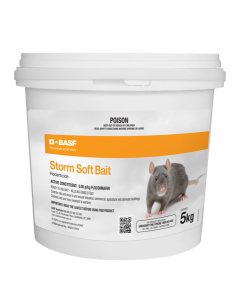 Storm Soft Bait Rodenticide 5kg0.05g/kg Flocoumafen
Storm Soft Bait Rodenticide 5kg0.05g/kg FlocoumafenStorm® Soft Bait Rodenticide has been developed into a unique, high oil content, soft bait formulation for unsurpassed efficacy even in the most difficult to control situations.
-
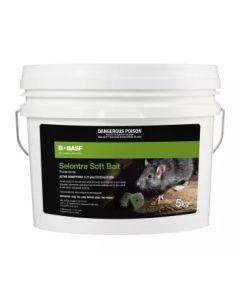 Selontra Soft Bait Rodenticide 5kg0.75g/kg Colecalciferol
Selontra Soft Bait Rodenticide 5kg0.75g/kg ColecalciferolSelontra Soft Bait Rodenticide is a highly effective, innovative rodent bait that rapidly controls rodent infestations. Selontra is powered by a non-anticoagulant active ingredient and formulated into a stable, highly palatable soft block formulation.
-
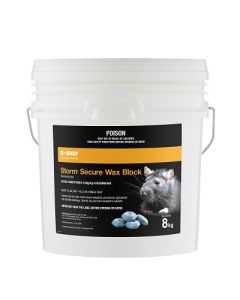 Storm Secure Wax Block Rodenticide 8kg0.05g/kg Flocoumafen
Storm Secure Wax Block Rodenticide 8kg0.05g/kg FlocoumafenStorm Secure is a second generation anticoagulant rodenticide. Only a very small amount is needed to kill a rat or mouse, and a lethal dose can be eaten in a single feed. Rodents then die three to five days after taking the bait. With some other rodenticides, rodents die more than a week after taking the bait.
-
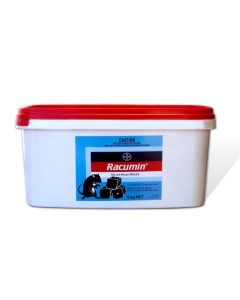 Racumin Mouse and Rat Wax Blocks0.37g/kg Coumatetralyl
Racumin Mouse and Rat Wax Blocks0.37g/kg CoumatetralylRacumin Mouse and Rat Blocks are ready to use. It is an economical anticoagulant product which requires repeated feeding over several days by the rodents to achieve control. In this way rodents do not become shy of the bait as may happen with acute baits. Pets and farm animals are at minimal risk as they are unlikely to gain repeated access to the bait.
-
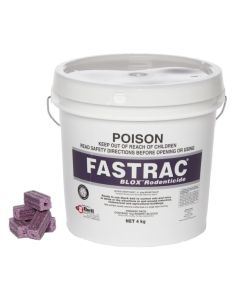 Fastrac Blox Rodenticide 4kg0.1g/kg bromethalin
Fastrac Blox Rodenticide 4kg0.1g/kg bromethalinFastrac Blox Rodenticide is a ready-to-use, highly palatable, and all-weatherable block bait that controls rats and mice, including those resistant to anticoagulants.
-
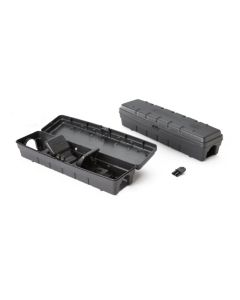 Protecta Evo Tunnel Rodent Bait Station
Protecta Evo Tunnel Rodent Bait StationThe new PROTECTA® EVO® TUNNEL™ is an economical and versatile way to protect traps. PROTECTA EVO TUNNEL can be used indoors or outdoors, and can be secured to fences or pipes via cable ties in both the vertical and horizontal position.
-
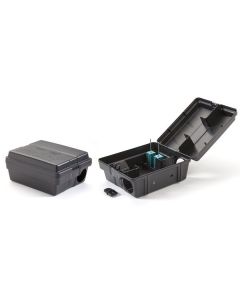 Protecta Evo Edge Rodent Bait Station (Carton of 6)
Protecta Evo Edge Rodent Bait Station (Carton of 6)PROTECTA EVO Edge is a versatile rodent bait station that is easy to use and service. The station opens and locks quickly with Bell’s EVO key. The built-in service record card holder, side-opening design and rounded interior walls make servicing fast, maximizing technician productivity. The station has a large bait capacity holding up to eight 28 g or four 225 g Blox securely inside the station and comes with vertical securing rods.
-
 Provoke Rat Attractant 225gFor use with traps
Provoke Rat Attractant 225gFor use with trapsProvoke Rat Attractant is a highly effective food-based matrix in gel form designed specifically for rats and used in rat traps. It contains a unique blend of scents that Norway and roof rats find enticing (rats are attracted more to scent than taste).
-
 Detex Blox with Lumitrack Rodent Monitoring BaitNon-Toxic Monitoring Bait
Detex Blox with Lumitrack Rodent Monitoring BaitNon-Toxic Monitoring BaitDETEX with Lumitrack is a non-toxic rodent monitoring bait with a special additive that makes rodent droppings glow bright green under black light.
-
 Trapper Pest and Mice Monitor
Trapper Pest and Mice MonitorA reusable, plastic station to monitor both mice and insects. Mice can be prevented from entering station by rotating lid.
-
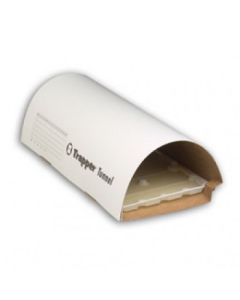 Trapper Tunnel Rodent Glueboards
Trapper Tunnel Rodent GlueboardsProtects Glue Boards from dust and debris. They prolong the effectiveness of the glue board and keep the captured rodent out of sight.
-
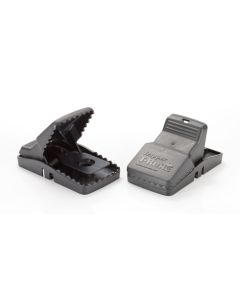 Trapper T-Rex Rat Trap
Trapper T-Rex Rat TrapTrapper T-Rex Rat Trap is a mechanical trap with interlocking teeth making escapes virtually impossible
-
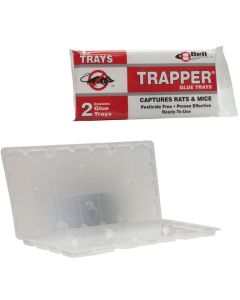 Trapper Rat Glue Tray
Trapper Rat Glue TrayTRAPPER 2-Pack contains two face-to-face glue boards which separate easily for placement. The glue boards are ideal to use sensitive areas where the use of poison is prohibited or discouraged.
-
 Protecta Shield Rodent Bait StationPlease buy in multiples of 12
Protecta Shield Rodent Bait StationPlease buy in multiples of 12The Protecta Shield is the latest in the range of professional rodent bait stations from Bell Laboratories. The Protecta Shield Rodent Bait Station is designed to be a hard working, efficient bait station that is very price competitive. Ideal for use in both domestic and commercial accounts, the Shield is set to become the bait station of choice for many rodent baiting programs.
-
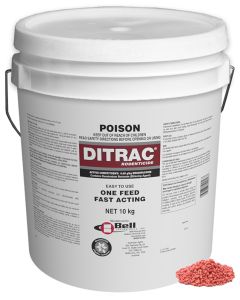 Ditrac Pellets Rodenticide 10kg0.05g/kg brodifacoum
Ditrac Pellets Rodenticide 10kg0.05g/kg brodifacoumDitrac Rodenticide is an all-weather, single-dose, anticoagulant rodenticide in pellet form. Ditrac pellets are highly palatable for the control of rats and mice.
-
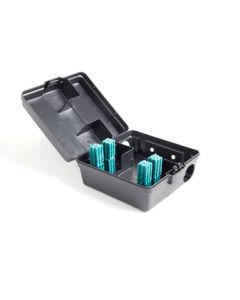 Bell Pulse Rat iQ Bait Station with Bluetooth Sensor
Bell Pulse Rat iQ Bait Station with Bluetooth SensorThe Bell Pulse Rat iQ Bait Station with Bluetooth Sensor is the first rat bait station with fully integrated Bluetooth sensor for detecting and timestamping rodent activity.
-
 Bell Trapper T-Rex iQ Rat Trap with Bluetooth Sensor
Bell Trapper T-Rex iQ Rat Trap with Bluetooth SensorBell’s T-Rex rat snap trap now comes with an incredible new feature, built-in sensing technology. Technicians can place T-REX iQ traps in hard to reach locations and know when there is a capture.
-
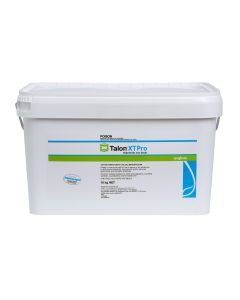 Talon XT PRO Rodenticide Wax Blocks 10kg0.05g/kg Brodifacoum
Talon XT PRO Rodenticide Wax Blocks 10kg0.05g/kg BrodifacoumTalon XT Pro Rodenticide Wax Blocks are a durable and effective rodenticide that sets the benchmark for rodent control, offering unparalleled performance against rats and mice in both damp and dry conditions. Trusted by professionals across residential, agricultural, and commercial sectors, these second-generation anticoagulant wax blocks deliver lethal results in a single feed, even against rodents resistant to other rodenticides like warfarin.
-
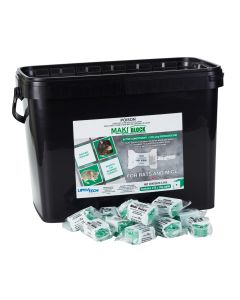 Maki Blocks Weather-Proof Rodenticide (Wrapped) 5.5kg0.05g/kg Bromadiolone
Maki Blocks Weather-Proof Rodenticide (Wrapped) 5.5kg0.05g/kg BromadioloneMaki Blocks are an weather-proof bait rodenticide formulated for the control of rats and mice, including those that are resistant to other anticoagulants. These Maki-Block rodenticides come individually wrapped for increased longevity and are registered for use in and around domestic, commercial, public service areas and industrial buildings.
-
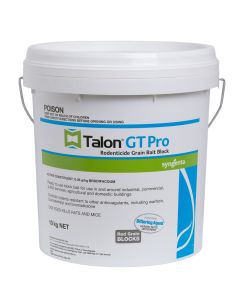 Talon GT Pro Rodenticide Grain Block0.05g/kg Brodifacoum
Talon GT Pro Rodenticide Grain Block0.05g/kg BrodifacoumTalon GT Pro Rodenticide Grain Bait Block is the new addition to the brodifacoum-based TALON® family. Talon GT Pro Rodenticide Grain Bait Block is a palatable rodenticide provides a quality grain block which kills rats and mice in a single feed.
-
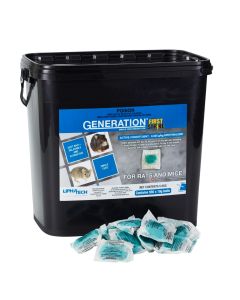 Generation First Strike Soft Bait Rodenticide 5.5kg0.025g/kg Difethialone
Generation First Strike Soft Bait Rodenticide 5.5kg0.025g/kg DifethialoneGeneration First Strike Soft Bait Rodenticide is a palatable soft bait rodenticide used for the control of rat and mice. It contains Difethialone, a single feed active ingredient with quick mode of action.
-
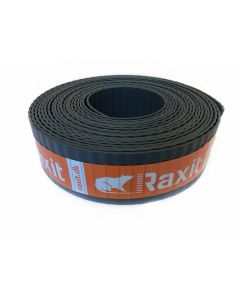 Raxit Ready To Use Door Seals - 75mm x 12.5mRubber seal roll only
Raxit Ready To Use Door Seals - 75mm x 12.5mRubber seal roll onlyThe Raxit Ready-to-Use Door Seals eliminate the risk of rodents and pests passing through the threshold and astragal gap of the doors.
-
 Raxit Aluminum Profile Shielding Strip 1mFor use with Raxit seals
Raxit Aluminum Profile Shielding Strip 1mFor use with Raxit sealsAn aluminium profile shielding strip 1m in length, designed for use with the Raxit Door Seals and rodent-proofing systems. Raxit Seals eliminate the risks of rodents and pests passing through the gaps of doors.
-
 Racumin Rat and Mouse Paste0.37g/kg Coumatetralyl
Racumin Rat and Mouse Paste0.37g/kg CoumatetralylRacumin Paste is a multi-dose anticoagulant rodenticide reigstered for the control of rats and mice. Feed over a period of several days to prevent bait shyness.
-
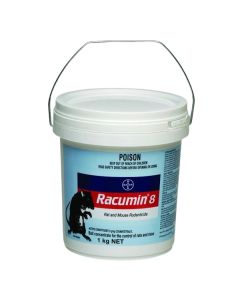 Racumin 8 Rat and Mouse Rodenticide Tracking Powder0.37g/kg Coumatetralyl
Racumin 8 Rat and Mouse Rodenticide Tracking Powder0.37g/kg CoumatetralylRacumin 8 Powder is a multi dose anticoagulant rodenticide. Use as a tracking powder or make your own bait to suit rodent species or situation.
-
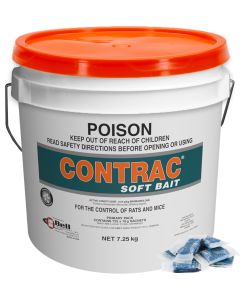 Contrac Soft Bait Rodenticide0.05g/kg Bromadiolone
Contrac Soft Bait Rodenticide0.05g/kg BromadioloneContrac Soft Bait Rodenticide is a single dose anticoagulant rodenticide with a highly palatable soft bait formulation for the control of rats and mice, including those resistant to other anticoagulants. It is for use in and around domestic, commercial, public services and industrial buildings.
-
 Ditrac Blox All Weather Rodenticide0.05g/kg brodifacoum
Ditrac Blox All Weather Rodenticide0.05g/kg brodifacoumDitrac Blox All Weather Rodenticide is a single dose anticoagulant rodenticide containing the active ingredient Brodifacoum. It is made from a highly palatable wax block formulation for the control of rats and mice.
-
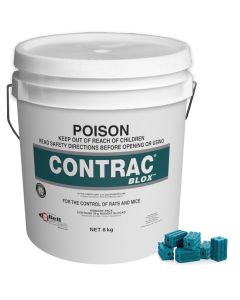 Contrac Blox All Weather Rodenticide0.05g/kg Bromadiolone
Contrac Blox All Weather Rodenticide0.05g/kg BromadioloneContrac Blox is a professional grade all-weather rodenticide designed for the effective control of rats and mice, including warfarin-resistant Norway rats. Formulated with the powerful active ingredient Bromadiolone, this single-feed anticoagulant wax block delivers rapid results, making it the ideal choice for both clean-out and maintenance baiting.
-
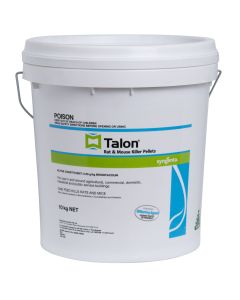 Talon Rodenticide Pellets0.05g/kg Brodifacoum
Talon Rodenticide Pellets0.05g/kg BrodifacoumSingle feed second generation anti-coagulant Rodenticide. Very effective control of rats and mice in and around buildings. One feed kills rats and mice. Controls species resistant to warfarin. Contains Bitrex human taste deterrent.
-
 SX Rat Gluebook (Pk10)
SX Rat Gluebook (Pk10)Designed to allow rats and mice to be caught quickly and effectively, gluebooks are ideal for situations where traditional baiting methods are unsuitable. Available in packs of 10.
Dimensions: 330 x 215 x 3 mm
-
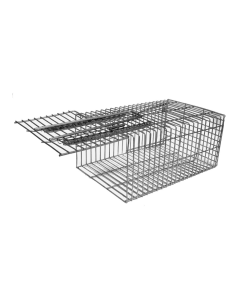 Live Catch Rat Trap
Live Catch Rat TrapHumane live catch cage trap for that is ideal for capturing rats and other small animals alive.
-
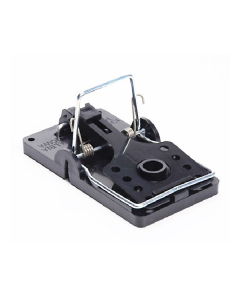 Snap E Rat Trap
Snap E Rat TrapDurable spring-loaded rat trap designed to efficiently eliminate rodents. Can be set up using one simple motion, and the same motion provides no-touch disposal of the captured rodent.
-
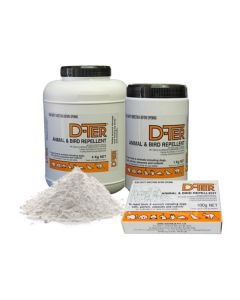 D-Ter Animal & Bird RepellentSafe & Effective
D-Ter Animal & Bird RepellentSafe & EffectiveD-Ter Animal & Bird Repellent is a safe and effective repellent used to deter unwanted animals and birds. D-Ter is ideal for use as a repellent for dogs, cats, birds, possums, kangaroos, bandicoots and many other animals.
-
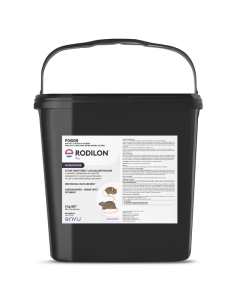 Rodilon Pro Soft Block Rodenticide 5kg0.025 g/kg Difethialone
Rodilon Pro Soft Block Rodenticide 5kg0.025 g/kg DifethialoneRodilon Pro is a soft bait rodenticide that targets rats and mice. Rodilon Pro represents a combination of the most recently developed anti-coagulant active ingredient (difethialone) with arguably the most palatable rodent bait matrix available.
-
 Bromakil Super Rat Drink0.5g/L Bromadiolone
Bromakil Super Rat Drink0.5g/L BromadioloneBromakil Super Rat Drink is a powerful and concentrated liquid rodenticide designed to effectively control rats and mice in residential, commercial, and industrial settings.
JOIN OUR NEWSLETTER NOW!
Be the first to hear about the latest specials, products, tips and ideas.

